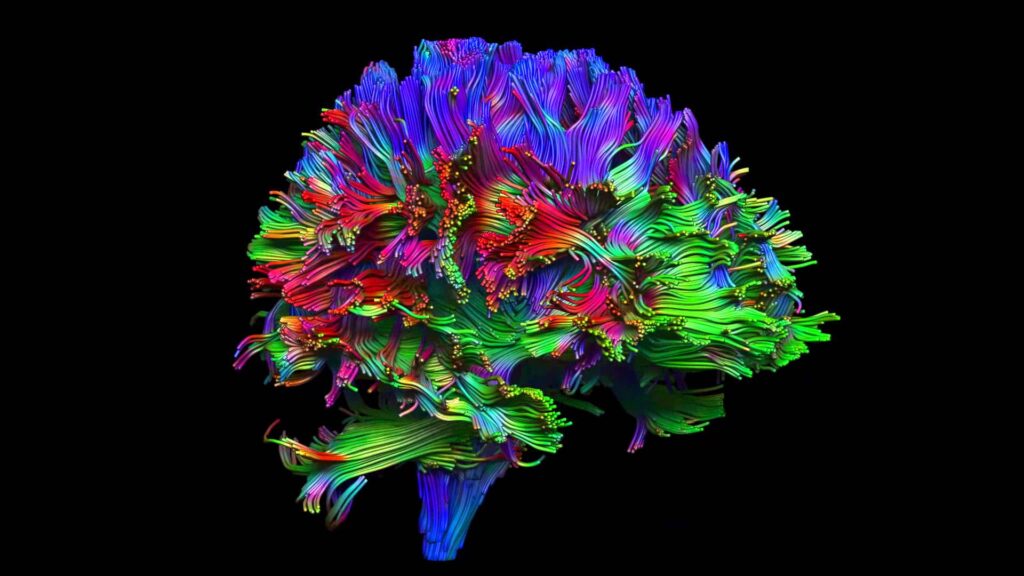VERTIGO
TINNITUS
- buzzing
- humming
- grinding
- hissing
- whistling
- age-related hearing loss
- inner ear damage caused by repeated exposure to loud noises
- an earwax build-up
- a middle ear infection
- Ménière’s disease– a condition that also causes hearing loss and vertigo (a spinning sensation)
- otosclerosis – an inherited condition where an abnormal bone growth in the middle ear causes hearing loss.
Less commonly, tinnitus may develop as a result of:
- a head injury
- exposure to a sudden or very loud noise, such as an explosion or gunfire
- anaemia – a reduced number of red blood cells that can sometimes cause the blood to thin and circulate so rapidly that it produces a sound
- reactions to certain medications, such as some chemotherapy medicines, antibiotics, diuretics, non-steroidal anti-inflammatory drugs (NSAIDs) and aspirin (this is more likely to occur at very high doses)
- acoustic neuroma – a rare non-cancerous growth that affects the hearing nerve in the inner ear
- high blood pressure (hypertension) and narrowing of the arteries (atherosclerosis)
- an overactive thyroid gland (hyperthyroidism) or underactive thyroid gland (hypothyroidism)
- diabetes
- Paget’s disease – where the normal cycle of bone renewal and repair is disrupted
Treatment of tinnitus
There’s currently no single treatment for tinnitus that works for everyone.
- sound therapy – listening to neutral sounds to distract you from the sound of tinnitus.
- counselling – therapy that aims to educate you about tinnitus and help you learn to cope with it more effectively.
- cognitive behavioural therapy (CBT) – therapy that aims to help change the way you think about your tinnitus so it becomes less noticeable.
- tinnitus retraining therapy (TRT) – therapy that aims to help retrain the way your brain responds to tinnitus so you start to tune the sound out and become less aware of it.
Hearing loss
- difficulty hearing other people clearly and misunderstanding what they say
- asking people to repeat themselves
- listening to music or watching television with the volume turned up higher than other people require.
General signs of hearing loss can include:
Two main types of hearing loss, depending on where the problem lies:
- sensorineural hearing loss – caused by damage to the sensitive hair cells inside the inner ear or damage to the auditory nerve; this occurs naturally with age or as a result of injury.
- conductive hearing loss – when sounds are unable to pass from your outer ear to your inner ear, often because of a blockage such as earwax, glue ear or a build-up of fluid from an ear infection, or because of a perforated ear drum or disorder of the hearing bones.
PREVENTION OF HEARING LOSS
- Don’t have your television, radio or music on too loud. You shouldn’t have dull hearing or ringing in your ears after listening to music.
- Use headphones that block out more outside noise, rather than turning up the volume.
- Use ear protection equipment such as ear muffs or ear plugs if you work in a noisy environment, such as a pub, nightclub, a garage workshop or on a building site. It’s important to insert ear plugs correctly to gain the benefit of wearing them.
- Use ear-protection equipment at loud concerts and at other events where there are high noise levels, such as motor races.
- Don’t insert objects into your ears or your children’s ears. This includes fingers, cotton buds, cotton wool and tissue.
- Be aware of the symptoms of common causes of hearing loss, such as ear infections (otitis media) and Ménière’s disease
- Visit your doctor if you or your child are experiencing hearing problems.
VERTIGO
Introduction
Vertigo is a symptom, rather than a condition itself. It’s the sensation that you, or the environment around you, is moving or spinning.
This feeling may be barely noticeable, or it may be so severe that you find it difficult to keep your balance and do everyday tasks.
Attacks of vertigo can develop suddenly and last for a few seconds, or they may last much longer. If you have severe vertigo, your symptoms may be constant and last for several days, making normal life very difficult.
Other symptoms associated with vertigo may include:
- loss of balance – which can make it difficult to stand or walk
- feeling sick or being sick
- dizziness
TREATMENT
SELF CARE
- Do simple exercises to correct your symptoms.
- Sleep with your head slightly raised on two or more pillows.
- Get up slowly when getting out of bed and sit on the edge of the bed for a minute or so before standing.
- Avoid bending down to pick up items.
- Avoid extending your neck – for example, while reaching up to a high shelf.
- Move your head carefully and slowly during daily activities.
- Do exercises that trigger your vertigo, so your brain gets used to it and reduces the symptoms (do these only after making sure you won’t fall, and have support if needed).
Causes of vertigo
PERIPHERAL VERTIGO
- benign paroxysmal positional vertigo (BPPV)
- head injury
- labyrinthitis
- vestibular neuronitis
- Ménière’s disease
- taking certain types of medication
- Central vertigo is caused by problems in part of your brain
- migraines
- multiple sclerosis
- acoustic neuroma – a rare, non-cancerous (benign) brain tumour that grows on the acoustic nerve, which is the nerve that helps to control hearing and balance
- a brain tumourin the cerebellum
- a transient ischaemic attack (TIA) or a stroke– where part of the blood supply to the brain is cut off
Investigations
Depending on your symptoms, your GP may refer you to a hospital or specialist for further tests.
Hearing tests
If you have tinnitus (ringing in your ears) or hearing loss, your GP may refer you to an ear, nose and throat (ENT) specialist, who can carry out some hearing tests.
These may include:
- an audiometry test – a machine called an audiometer produces sounds of different volume and pitch. You listen to the sounds through headphones and signal when you hear a sound, either by raising your hand or pressing a button.
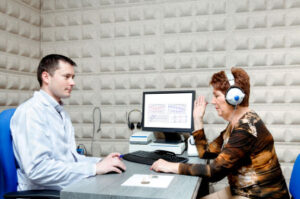
- tuning fork test – a tuning fork produces sound waves at a fixed pitch when it’s gently tapped. The tester will tap the tuning fork before holding it at each side of your head.
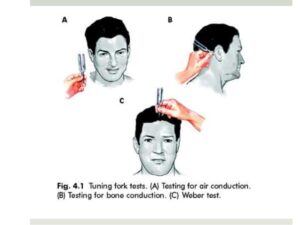
Videonystagmography
Videonystagmography (VNG) is sometimes used to check for signs of nystagmus in more detail. Nystagmus can indicate a problem with the organs that help you to balance.
During this test, special goggles are placed over your eyes and you’ll be asked to look at various still and moving targets. The goggles are fitted with a video camera to record the movements of your eyes.
Electronystagmography may also be used, where electrodes are placed around the eye instead of goggles.

Caloric testing
A caloric test involves running warm or cool water or air into your ear for about 30 seconds. The change in temperature stimulates the balance organ in the ear, allowing the specialist to check how well it’s working.
This test isn’t painful, although it’s normal to feel dizzy during the test. This can sometimes continue for a few minutes afterwards.
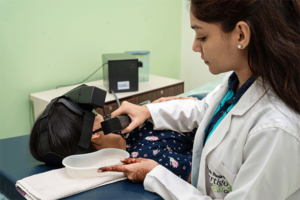
Posturography
A machine to test your balance may be used to give valuable information about how you are using your vision, proprioception (sensations from your feet and joints) and the input from your ear to maintain balance. This may help to plan your rehabilitation and monitor your treatment

Scans
In some cases, a scan of your head may be used to look for the cause of your vertigo, such as an acoustic neuroma (a non-cancerous brain tumour).
Usually, either a magnetic resonance imaging (MRI) scan or a computerised tomography (CT) scan is used. An MRI scan uses a strong magnetic field and radio waves to produce a detailed image of the inside of your head, whereas a CT scan uses a series of detailed X-rays to create an image.
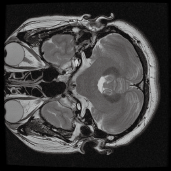
Bera-test
Brain Evoked Response Auditory (BERA) is a hearing examination performed on children aged 1 to 3 years. Meanwhile, for children with a smaller age, Oto Acoustic Emission (OAE) examination can be carried out. If the BERA test results are stated in good condition, it can be concluded that the child’s hearing function is within normal limits and no further medical treatment is necessary. However, if the BERA test results are declared abnormal, then the examination will continue with the estimation or prediction of the hearing threshold and hearing rehabilitation must be carried out as early as possible by using hearing aids. BERA test itself will take approximately one hour.
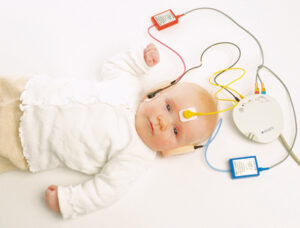
TREATMENT
Labyrinthitis
Labyrinthitis is an inner ear infection that causes the labyrinth (a delicate structure deep inside your ear) to become inflamed. It’s usually caused by a viral infection and clears up on its own without treatment. In rare cases, where labyrinthitis is caused by a bacterial infection, antibiotics may be prescribed.
Benign paroxysmal positional vertigo (BPPV)
Like vestibular neuronitis, benign paroxysmal positional vertigo (BPPV) often clears up without treatment after several weeks or months. It’s thought that the small fragments of debris in the ear canal that cause vertigo either dissolve or become lodged in a place where they no longer cause symptoms. BPPV can sometimes return.
Until the symptoms disappear or the condition is treated, you should:
- get out of bed slowly
- avoid activities that involve looking upwards, such as painting and decorating or looking for something on a high shelf.
BPPV can be treated using a procedure called the Epley manoeuvre.
Ménière's disease
treatments for Ménière’s disease include: • dietary advice – particularly a low-salt diet • medication to treat attacks of Ménière’s disease • medication to prevent attacks of Ménière’s disease • treatment for tinnitus (ringing in your ears) – such as sound therapy, which works by reducing the difference between tinnitus sounds and background sounds, to make the tinnitus sounds less intrusive • treatment for hearing loss – such as using hearing aids • physiotherapy to deal with balance problems • treatment for the secondary symptoms of Ménière’s disease – such as stress, anxiety and depression
Medicines
Medication can be used to treat episodes of vertigo caused by vestibular neuronitis or Ménière’s disease. It may also be used for central vertigo or vertigo with an unknown cause.
The medicines are usually prescribed for 3 to 14 days, depending on which condition they’re for. The two medicines that are usually prescribed are:
• prochlorperazine
• antihistamines
If these medicines are successful in treating your symptoms, you may be given a supply to keep at home, so you can take them the next time you have an episode of vertigo.
In some cases you may be advised to take long-term medication, such as betahistine, for conditions like Ménière’s disease.
Prochlorperazine
Prochlorperazine can help relieve severe nausea and vomiting associated with vertigo. It works by blocking the effect of a chemical in the brain called dopamine. Prochlorperazine can cause side effects, including tremors (shaking) and abnormal or involuntary body and facial movements. It can also make some people feel sleepy. For the full list of possible side effects, check the patient information leaflet that comes with your medicine.
Antihistamines
Antihistamines can be used to help relieve less severe nausea, vomiting and vertigo symptoms. They work by blocking the effects of a chemical called histamine.
Possible antihistamines that may be prescribed include:
• cinnarizine
• cyclizine
• promethazine teoclate
Like prochlorperazine, antihistamines can also make you feel sleepy. Headaches and an upset stomach are also possible side effects. Check the patient information leaflet that comes with your medicine for the full list of possible side effects.
A medication called betahistine works in a similar way to antihistamines. It has been used to treat Ménière’s disease and may also be used for other balance problems. It may have to be taken for a long period of time. The beneficial effects vary from person to person.

